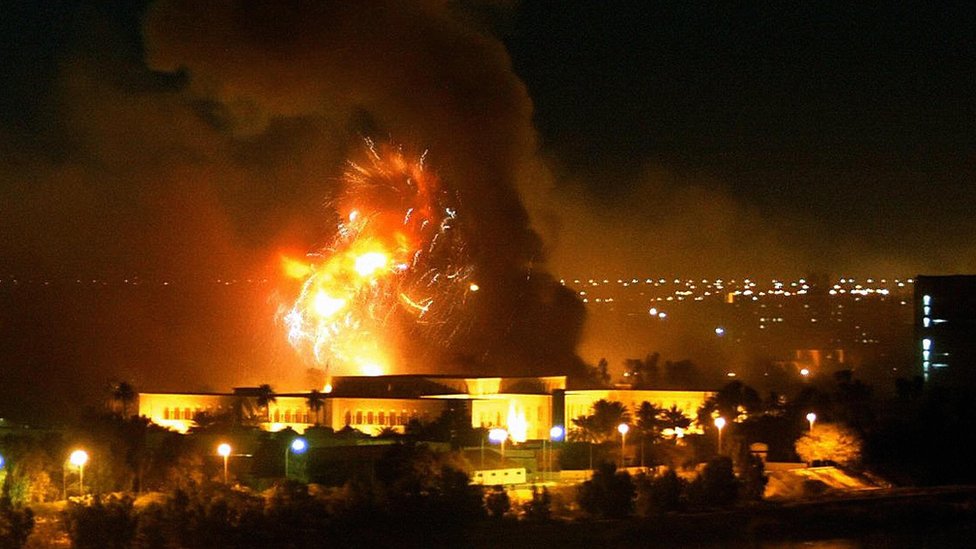US response to Tower 22 attack: strategic shift and limited objectives

Shafaq News/ The Middle East Institute (MEI) conducted a review of the US raids that took place on February 3 in Iraq and Syria.
The institute noted that while the raids were less powerful than anticipated, they signify a shift compared to previous American strikes, both at the operational level and in terms of their overarching objectives.
According to the Analysis, the preliminary reports said the airstrikes in Syria killed 29 members of Iranian forces, including 9 Syrians, 6 Iraqis, 6 members of Lebanese Hezbollah, and 8 unidentified persons, likely to be Afghans and Iranians. In total, 10 people were killed in al-Mayadin and 10 in Deir ez-Zor and the Ayyash depot.
In Iraq, the airstrikes killed 16 people and injured 24, according to the Iraqi government, which stated that “the bombing in al-Qa’im and Akashat in western Anbar caused civilian deaths.”
MEI report suggested that the US airstrikes differed from previous military actions in several ways, both at the operational level and in terms of their overall objective.
“The operational shift was clear in the choice of targets: For the first time, US warplanes bombed military targets affiliated with pro-Iran militias in the center of Deir ez-Zor. The airstrikes targeted weapons and munitions depots near al-Umran Institution on Port Said Street and a weapons depot on Cinema Fouad Street, in addition to the al-Jabal outlook overseeing Deir-ez-Zor city and its military airport.”
“These are some of the most tightly guarded locations in the densely populated city, used by Iranian militias as weapons depots and centers to oversee operations against US forces stationed in the Green Village at the al-Omar oil field base and the Conoco gas field base, which are the two most important US bases in Deir ez-Zor Governorate.” The report said.
In addition to the operational shift, the US airstrikes, according to the MEI, were also marked by a change in their overall objective.
“The strikes did not seek to cause the greatest possible number of casualties or target the leaders of Iranian militias in Syria and Iraq; rather, they sought to undermine the military capabilities and the command and control posts of those militias, in an attempt to reduce their ability to carry out similar attacks in the future.”
“A clear indication that the US objective was to destroy those militias’ military capabilities is the nature of the targets chosen. In Anbar, the airstrikes targeted the posts of the PMF and Iranian militias in al-Qa’im and Akashat, used to coordinate between their Iraqi and their Syrian branches. These posts also oversee the transport of weapons and fighters between the two countries and manage the intelligence used to launch attacks against US forces, most recently the Tower 22 and al-Omar attacks.”
“The airstrikes also targeted many weapons and munitions depots, including those of the PMF in al-Qa’im and Akashat, Iranian militia depots in al-Bukamal and central Deir ez-Zor, and the Ayyash depots. While this greatly undermines the capabilities of those militias, the latter still pose a threat, given their ability to replenish their weapons and munitions from Iran through Iraq.”
MEI pointed out that several factors minimized the impact of the US airstrikes.
“First, Washington lost the element of surprise by declaring its intention to strike those responsible for the attack that caused the death of 3 US service members. The actual strikes were carried out nearly a week after the announcement, which gave those parties ample time to evacuate and go into hiding. This may be an indication that the US did not wish to exacerbate the conflict in the region, which would explain why no senior leaders were killed in the airstrikes.”
“Second, the US did not target Iran to avoid expanding the ongoing war and engaging Iran directly. The strikes were carried out in areas controlled by pro-Iran militias on the Syria-Iraq border in the cities of al-Mayadin, Deir ez-Zor, al-Qa’im, and elsewhere. In fact, these areas are routinely targeted by the US and sometimes Israel to avoid striking targets on Iranian soil or even the leaders of Iranian forces in Iraq and Syria who oversee those militias’ activities.”
The report also suggested that after the US response, two scenarios were anticipated, either the strikes would deter “militias” in Iraq and Syria from attacking US forces temporarily, or the attacks by armed groups against US targets to continue due to the limited scope of the airstrikes against the militias in Syria and Iraq.
In conclusion, the report said that the US response to the Tower 22 attack was less intense and more restrained than anticipated, in line with the calculated escalation strategy governing the conflict between the US and Iran.





